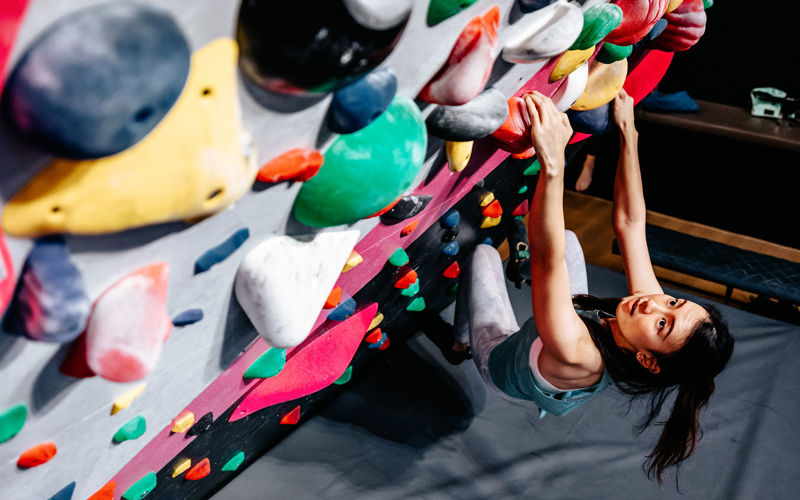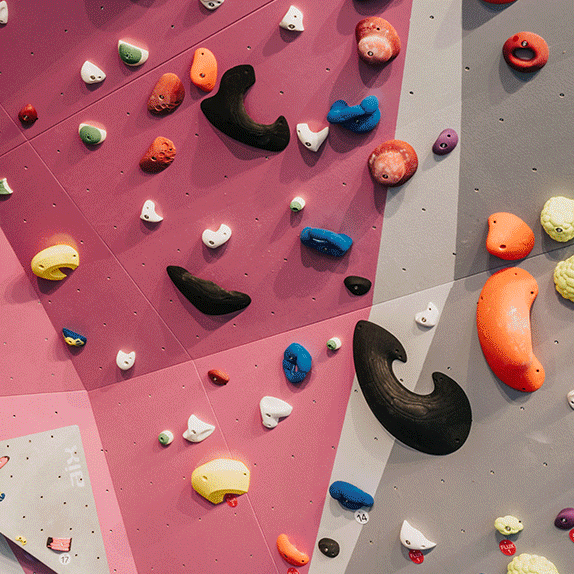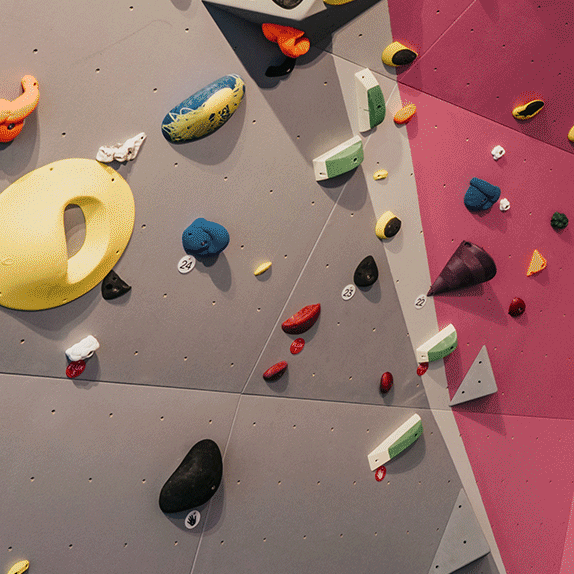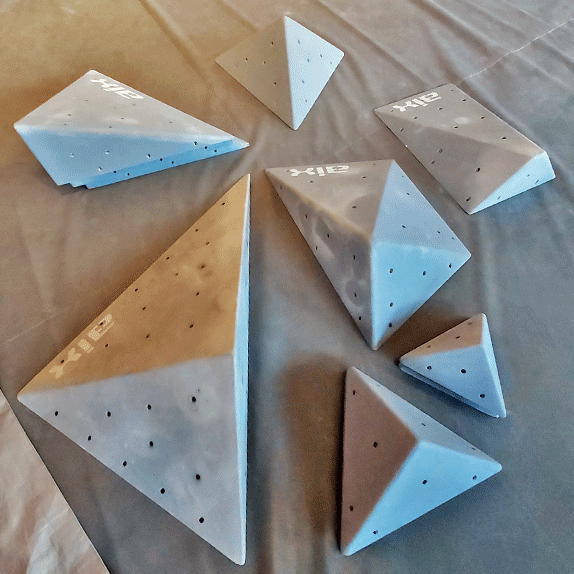
We use our hands for just about everything in life. From craftwork and cooking to physical labour and working out - our hands (and fingers) have the natural ability to grip onto things. So it would seem that using our hands for rock climbing would be a natural fit and an easy task, right? Well, the answer is both a yes and no. While the act of gripping is straightforward, the details of how your fingers interact with climbing features can make a difference in your ability to stay on the wall.
Types of Rock Climbing Handholds / Grips / Features

General Classifications
- Handholds are any climbing features that your hands and fingers can utilise to create or control climbing movements.
- Handholds can come in just about any shape, size or colour. They are typically larger than footholds and easy to spot from a distance.
- A handhold can also refer to a part of a larger climbing feature that you can place your hand(s) or fingers on.
- While handholds are typically located above your current climbing position, they are not limited to being used only by your hands. You can step on handholds that you have climbed past.

- Footholds refer to any climbing features that your feet and climbing shoes can utilise to create, support, or control climbing movements.
- Footholds can come in just about any shape, size, or colour. They are typically smaller than handholds and are frequently more challenging to utilise.
- A foothold can also refer to a part of the climbing wall or a large climbing feature that can provide sufficient friction to create movement.
Types of Handholds

Jugs and Handlebars
- These handholds are typically large in size, are easy to spot because they have cavities that offer ample space for your hands and fingers to grip on to.
- Jugs and handlebars provide a lot of support for making and controlling climbing movements, but the direction they face can sometimes provide additional challenges.

Pockets, Edges and Crimps
- These handholds are progressively smaller versions of jugs. Their reduced size and distinct shapes often restrict the number of fingers that you can use to hold on to them, or reduce the amount of contact your hands can have with the handhold.
- Using these handholds regularly can help to hone your grip strength. However, we recommend exercising some caution when using these handholds. Read here for more information on safe gripping techniques.

Slopers and Pinchers
- Any shape with distinctly sloping surfaces can be classified as slopers. Most commonly, slopers take a globular shape, appearing as a dome or a rounded object.
- Slopers that do not offer additional features for climbers to grip on to can be very challenging! Climbing on slopes handholds will require a good amount of body awareness in order to generate and utilise any friction from physical contact.
- Handholds that allow you to grip with your fingers, as well as your thumb, are considered to be pinches. As long as you can place your thumb on a handhold for support, you will be pinching it in doing so, however, this can often be physically demanding, so proceed with caution!

Volumes
- Many climbing gyms have these large climbing shapes and objects mounted to their walls. Popular designs include large geometric shapes like cubes, wedges, pyramids, and diamonds.
- Instead of offering features that you can grip on to, volumes offer additional climbing surfaces, edges, and angles that you can climb or step on. When used well, they can completely change a climbing landscape and provide additional movement challenges.
- For easy identification, all climbing volumes in Boulder Movement are grey in colour and form part of the general climbing environment. They can be used by all climbers on any climb.
How Do I Grip Climbing Handholds?

Open-Handed Grip
- This is the most energy-efficient grip position for engaging on handholds. It enables you to grip on to handholds with the least amount of deliberate force, allowing for your wrist and arms to support additional movements from your body.
- Aim to place only the first and/or second segment of your fingers on the handhold. The rest of your hand is extended in line with your forearm. This keeps your palms in an "open" position (thus the name) while you hang from the handhold.
- While this grip is efficient, it can be difficult to master, especially when applied to slopers and pinches. As your fingers' strength improve, this grip will feel easier to hold and maintain.

Half Crimped Grip
- This grip position is often intuitive and a default grip that new climbers use. It provides a fair balance between the amount of energy required and the amount of force it can generate.
- To actively use this grip, you will need to press your finger tips into the handhold, bending your fingers at a right angle across your middle knuckles. Your palm would be closer to handhold and the muscles in your hand and forearm will be activated.
- Using this grip often and holding it for long durations however can be very challenging because it is not efficient. We recommend using this grip sparingly (only when you have to) and practicing adopting the Open-Handed grip instead.

Full Crimped Grip
- Often deployed to catch on to the most challenging handholds, this way of gripping allows a climber to dig his/her fingertips into any feature, reinforced by their thumb for extra support.
- This grip position is very strong but greatly limited in many other areas. It reduces mobility in your wrist and elbows, limits your body's other movements, and requires a large amount of energy to execute.
- We do not recommend using this grip regularly because of its limitations and the high risk of injury from the intense stress placed on your knuckles and fingertips.